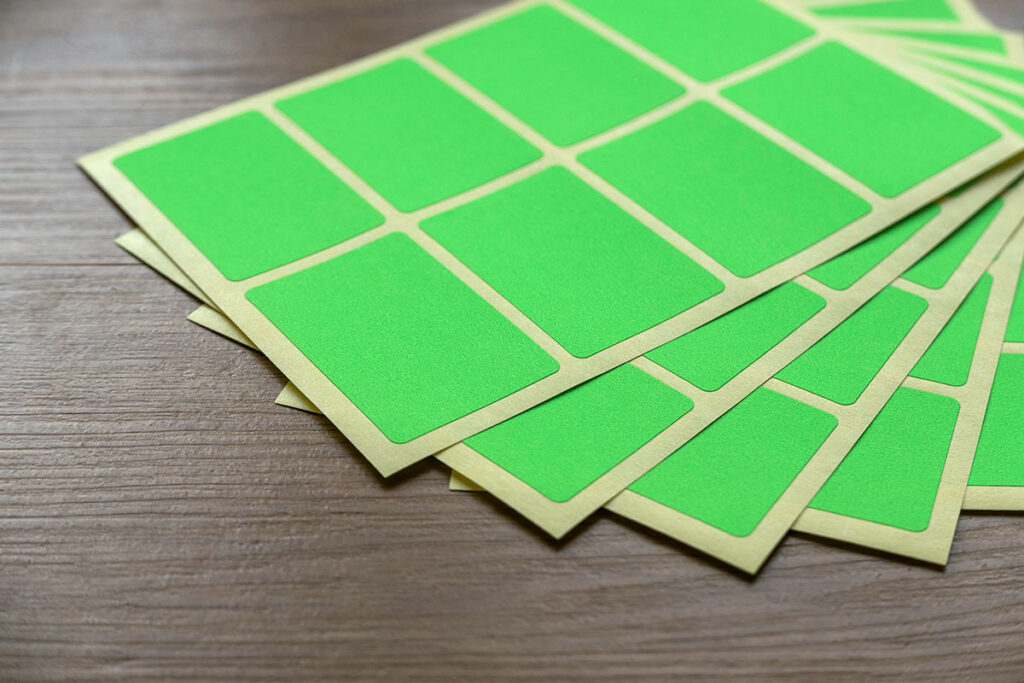Lightning Fast Turnaround!

Choosing the right material for San Antonio custom stickers and decals is crucial for achieving the desired impact and longevity. The material influences not only the sticker’s appearance but also its durability, usability, and overall effectiveness. Here are some considerations:
When it comes to sticker printing in San Antonio, there is a diverse range of sticker materials to choose from, each suited for different purposes:
Understanding these materials empowers you to make informed decisions when selecting custom stickers and decals tailored to your project’s needs.
When selecting materials for custom stickers, understanding the various types available is essential. Each material has its unique characteristics that influence durability, cost, and ideal applications.
Made from polyvinyl chloride (PVC), these stickers are known for their versatility.
Characteristics:
Ideal Applications:
Constructed from various types of paper, these stickers are often more budget friendly.
Characteristics:
Ideal Applications:
Comparing these two popular types of sticker materials highlights their strengths:
A growing trend in sticker production focuses on sustainability. Eco-friendly stickers, such as those made from Kraft paper, offer notable environmental benefits:
These options cater to environmentally conscious brands looking to reduce their ecological footprint while maintaining quality in their promotional materials.
Specialty stickers offer unique features that enhance visual appeal and functionality. Two popular types are clear stickers and holographic/metallic stickers, each serving distinct purposes in branding and promotion.
Clear vinyl stickers are made from transparent material, providing a floating effect when applied to glass surfaces. This design choice creates a sleek, minimalist look that can elevate any product or brand.
Ideal for window displays, product labeling, and artistic designs, clear stickers seamlessly integrate with various backgrounds, allowing the underlying surface to shine through.
Holographic stickers feature light-reflective properties that create mesmerizing effects. The vibrant colors shift as light interacts with the surface, making them perfect for attracting attention in marketing campaigns.
Metallic stickers lend an elegant touch to packaging and promotional materials. Their sophisticated appearance appeals to luxury brands while also providing durability against wear.
Choosing the right finish can significantly enhance both durability and aesthetics. Different finishes include:
Applying a laminate layer adds an extra level of protection against scratches, fading, and moisture. Options include:
Selecting the best materials for custom stickers depends on understanding specific application needs. Here are some guidelines to help you make the right choice:
For outdoor or long-term applications, it’s important to choose materials that can withstand various weather conditions and maintain their appearance over time. Consider the following options:
If your project involves temporary or indoor use, you may have different requirements. Here are some suitable choices:
Aligning material choice with project goals enhances effectiveness:
Each application has unique requirements that should guide your choices to ensure optimal performance and impact.
Choosing the right material for custom stickers and decals requires careful thought about your specific needs. Here are the main factors to consider:
By understanding your requirements, you’ll be able to select the most appropriate sticker material. Vinyl is great for durability, while paper is a more cost-effective option. Keep in mind that the right choice will not only improve functionality but also support your project’s objectives when you’re sourcing custom decals in San Antonio TX.
Take the time to assess your individual needs so you can make an informed decision on how to choose the best material for custom stickers and decals.
When selecting materials for custom stickers and decals, consider durability, cost-effectiveness, application type (indoor vs outdoor), and the specific goals of your project. Understanding these factors will help you choose the best material that meets your needs.
Vinyl stickers are known for their durability and water resistance, making them ideal for outdoor applications. In contrast, paper stickers are typically more cost-effective but less durable, making them suitable for indoor use or temporary applications.
Yes, there are several eco-friendly sticker options available, including recyclable materials like Kraft paper. These sustainable choices allow brands to minimize their environmental impact while still providing high-quality products.
Specialty finishes such as clear vinyl, holographic, and metallic can enhance the aesthetic appeal of your stickers. These finishes not only provide a unique look but also improve durability and make your branding more eye-catching.
For outdoor applications, choose materials like vinyl that offer weather resistance and durability. For indoor use, paper stickers may suffice if they’re temporary. Assessing the longevity required and environmental exposure will guide your material choice.
Assessing your individual needs ensures that you select a sticker material that aligns with your project goals—whether it’s branding, safety labeling, or promotional purposes. This careful consideration can lead to better performance and satisfaction with the final product.
|
Uploaded
Failed
|
 |